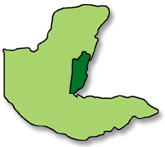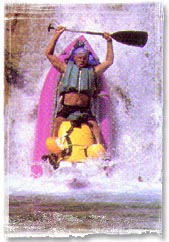12 Top Jungle
Rivers
A two-hour drive then takes you to a remote Mayan village where Mayan cowboys--members of the Mopan and Kekchi Maya peoples--load you and your gear on horseback for a half-day trot to the put-in. Only then does the river portion of your trip begin, as you take off on a Caribbean-bound waterway fed by more than 150 inches of rain each year. "It's definitely about as remote as you can get in Belize," says Tim Boys, who ran the first descent of the river in 1995. "There's not a lot of people down there." But there is plenty of emerald-green whitewater: stair-stepping through a jungle-filled gorge are more than 60 rapids, including several 18- to 20-foot drops--like aptly named Monkey Falls--that cascade into deep pools as green as the jungle walls. Camping takes place in the heart of the forest among indigenous birds, jaguar tracks and howler monkeys. If you're lucky you might even spot a monkey eagle or shadow-casting whitehawk eagle--the largest neo-tropical bird of prey in existence--catching thermals rising from the river up the canyon walls. And, of course, there's plenty of time to relax at camp, hike and practice blowing bubbles with indigenous tree sap. --For more information, contact Island Expeditions, 368-916 W. Broadway, Vancouver, B.C. Canada V5Z-1K7; (800) 667-1630 (phone); (604) 452-3433 (fax); island@whistler.net (e-mail). --edb |

